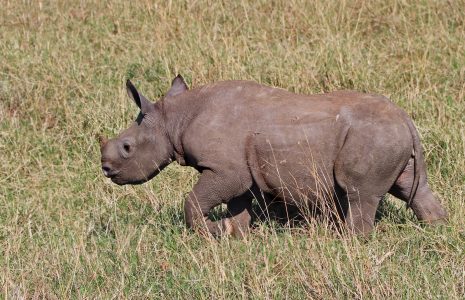Unveiling Tanzania: From Wild Plains to Island Dreams
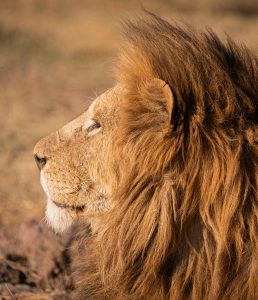 12 August 2025
12 August 2025
Imagine a land where the ancient rhythms of nature beat strong, where vast savannahs teem with life, and where turquoise waters lap against pristine white sands. This is Tanzania, a destination that promises not just a holiday, but an unforgettable journey into the heart of Africa. From the iconic Great Migration to the serene shores of Zanzibar, Tanzania offers a kaleidoscope of experiences that cater to every traveller’s dream. Whether one is a wildlife enthusiast, an adventure seeker, or simply yearning for idyllic beach relaxation, this East African gem delivers in spades.
This guide delves deep into what makes Tanzania an unparalleled travel destination, covering its legendary safaris, hidden mainland treasures, and the blissful island escapes of Zanzibar, ensuring visitors are fully equipped to plan their perfect Tanzanian adventure.
The heart of the wild – experiencing Tanzania’s mainland safari
From ‘the greatest wildlife show on Earth’ to an ancient collapsed volcanic caldera, Tanzania offers safari experiences which will leave you amazed. Enormous 100s-strong herds of elephants in Tarangire, tree-climbing lions and flocks of flamingos in Lake Manyara National Park and the untamed, vast habitats of the Nyerere and Ruaha national parks all offer unique safari experiences.
The Great Wildebeest Migration in Tanzania
The Great Migration, also known as “the greatest wildlife show on earth”, is a continuous, year-round journey of over a million wildebeest, zebras, and other animals across the Serengeti ecosystem. Driven by the search for fresh grazing and water, this spectacle offers unique wildlife viewing opportunities at different times of the year.
- December – April: Calving Season – The herds gather in the southeastern Serengeti, particularly the Ndutu area, for the calving season. February is the peak month for births, attracting a high concentration of predators like lions and hyenas, making for dramatic wildlife interactions.
- May – July: The Trek North – The animals begin their long trek north, facing their first major obstacle: the crocodile-filled Grumeti River in the western Serengeti.
- August – September: The Mara River Crossings – This is the most iconic part of the migration. The herds reach the Mara River in the northern Serengeti, where they face a perilous crossing, a highly sought-after spectacle for visitors.
- October – November: The Return South – The animals begin their journey back to the southern plains, completing the circular migration and preparing for the next calving season.
Beyond the migration: Tanzania’s diverse safari gems
Beyond the spectacular Great Migration, mainland Tanzania boasts a diverse array of national parks. Each park offers unique landscapes and wildlife, ensuring fantastic encounters year-round. The distinct geography and varied habitats of these parks create special concentrations of certain wildlife and allow for the observation of rare animal behaviours. This ecological variety ensures a personalised safari experience based on what interests you most.
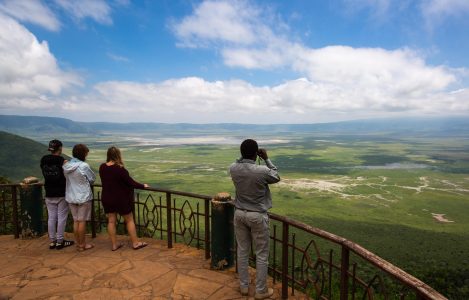 Ngorongoro Crater: The 8th wonder of the world
Ngorongoro Crater: The 8th wonder of the world
The Ngorongoro Conservation Area, a UNESCO World Heritage site, is a vast volcanic caldera home to an incredibly high density of wildlife. It’s one of the best places in Africa to spot the ‘big five’ – lion, leopard, elephant, buffalo, and the critically endangered black rhino – in a single game drive. The crater floor is a haven for wildebeest, zebras, and a high concentration of predators, including lions, cheetahs, and hyenas, although leopards can be elusive.
The mineral-rich volcanic soils create lush grasslands, which in turn attract large herds of herbivores, leading to one of Africa’s densest lion populations. The area’s diverse habitats, from the Lerai Forest filled with fever trees, provide shade and food for elephants, while the saline Lake Magadi, also attracts over 500 species of birds, including flocks of flamingos and a variety of waterbirds. The rare, endangered black rhinos are often spotted from a distance in the swamps, making a sighting a truly special experience.
Tarangire National Park: Elephant kingdom & baobab landscapes
Tarangire National Park is famous for its vast elephant herds and iconic baobab trees. During the dry season (June to October), you can see some of Africa’s largest elephant herds, with up to 200 elephants gathering along the permanent Tarangire River. The park is also rich in other wildlife, including zebras, wildebeest, and various antelopes, along with predators like lions, leopards, and cheetahs. Birdwatchers will be delighted by over 500 species, including the endemic ashy starling and rufous-tailed weaver. For a different experience, Tarangire offers unique activities such as night game drives to spot nocturnal animals like civets and porcupines. You can also take a walking safari for a closer look at the smaller details of the bush or enjoy a hot air balloon ride for stunning panoramic views. Cultural tours to the local Maasai and Barbaig tribes are also available.
Lake Manyara National Park: Tree-climbing lions & pink flamingos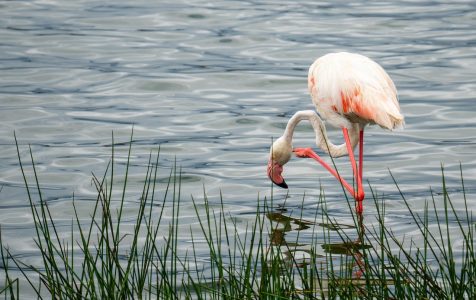
Despite its smaller size, Lake Manyara National Park is famous for its unique tree-climbing lions, a rare sight in Africa. It’s home to four of the Big Five: elephants, hippos, buffalo, and the elusive leopard, along with Africa’s largest concentration of baboons. The park’s diverse landscape includes a shallow soda lake, which attracts huge flocks of pink flamingos, pelicans, and many other bird species, making it a birdwatcher’s paradise. Beyond standard game drives, you can also enjoy boat rides on the lake to see hippos up close, take guided walks to appreciate the smaller creatures, or experience the culture of the nearby Maasai tribe.
Southern circuit secrets: Nyerere National Park & Ruaha National Park
For a distinct and less crowded safari, consider the Southern Circuit parks of Nyerere and Ruaha. These destinations are perfect for travellers who want a raw, expansive wilderness experience with unique wildlife and activities not found in the more popular Northern Circuit.
Nyerere National Park
Now Tanzania’s largest national park, Nyerere National Park was once the northern part of the Selous Game Reserve. This vast UNESCO World Heritage Site is a haven of biodiversity, protecting significant populations of African elephants, hippos, and crocodiles. It’s also a vital refuge for endangered species, such as the African wild dog and the black rhinoceros. The park’s varied landscape of Miombo woodlands, grasslands, and riverine forests is dominated by the Rufiji River, a prime location for spotting aquatic wildlife. It also has distinctive “sand rivers” that become raging torrents during rain.
Nyerere offers a unique range of activities, including boat safaris on the Rufiji River, walking safaris, and night game drives. While some of the big predators, like lions and leopards, become more active and are often seen hunting at night, the drives also focus on animals that are rarely seen during the day, like civets, genets, porcupines and bushbabies, as well as some nocturnal birds like owls and nightjars. You can even try your hand at sport fishing.
Ruaha National Park
A true hidden gem, Ruaha National Park offers an unfiltered, crowd-free safari in one of Tanzania’s largest parks. It’s home to a staggering 10% of the world’s lion population, with prides that are less habituated to vehicles, making for a truly thrilling sighting. Ruaha is also a stronghold for the endangered African wild dog, known for having some of Africa’s largest pack sizes.
The park protects a huge elephant population, with around 12,000 elephants migrating through the region annually. You’ll also find massive herds of buffalo and a variety of other animals, including both Masai and reticulated giraffes. Keep an eye out for the rare sable and roan antelopes and the elusive lesser kudu. For bird lovers, the park is a paradise, with over 570 recorded species, including the endemic Ruaha red-billed hornbill. For a different kind of adventure, night drives offer the chance to spot nocturnal species like bat-eared foxes and aardvarks.
The Zanzibar archipelago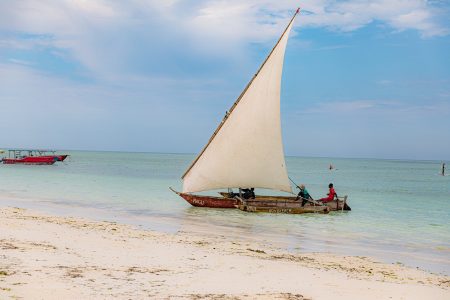
Just off the coast of Tanzania lies the Zanzibar Archipelago, a breathtaking collection of islands steeped in history and natural beauty. Zanzibar is a tropical paradise. It’s more than just a beach destination. The islands are a melting pot of cultures. Centuries of trade and influence from Africa, Arabia, India, and Europe shaped their rich past. Explore the winding alleyways of historic Stone Town, or relax on pristine white-sand beaches. Zanzibar offers a diverse experience for adventurers, history buffs, and sun-seekers alike. Zanzibar Island is the main hub. But the archipelago also has smaller islands. Each one has its own unique appeal. These islands are perfect for day trips or a secluded stay.
Zanzibar island escape
Zanzibar’s largest and most visited island, Unguja—known simply as Zanzibar Island—is the beating heart of the archipelago. Home to the historic capital of Stone Town and a coastline dotted with breathtaking resorts, this is the Zanzibar you’ve seen in postcards and on Instagram. The best time to visit is during the dry season, from June to October. The weather is consistently perfect for a beach holiday. For a quieter, more affordable escape, try the rainy season from November to May. You’ll still get plenty of sunshine and stunning, lush landscapes.
Beyond lazy days on the beach, Zanzibar’s resorts offer a world of adventure. Embrace the turquoise waters with thrilling water sports like kitesurfing, snorkelling, and diving among vibrant coral reefs. Or, take to the land on two wheels with cycling tours, exploring coastal villages and spice plantations for an active and immersive experience.
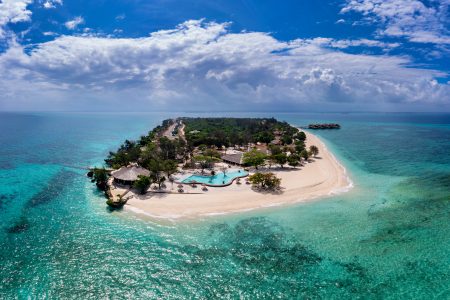 Bawe Island
Bawe Island
Bawe Island is a short boat ride from Stone Town. It’s a tranquil, lesser-known spot. Visitors come for its pristine beaches and peaceful atmosphere. The island is ideal for a quiet escape. It’s also a great place for snorkelling and diving. You will find crystal-clear waters and vibrant marine life. You can also take sunset cruises from the island, offering a different perspective of the archipelago.
Chumbe Island
Chumbe Island is a shining example of ecotourism and conservation. This privately managed nature reserve protects a coral reef sanctuary. It’s one of the most spectacular shallow snorkelling spots in East Africa. The island’s “coral rag” forest is a rare habitat for various species, including the elusive giant coconut crab. Chumbe Island operates on a strictly eco-friendly model, with visitors staying in unique, solar-powered bungalows and all activities designed to support conservation efforts.
Mnemba Island
Mnemba Island sits off the northeast coast of Unguja. This small, private island offers luxury and world-class diving. A protected coral reef, known as the Mnemba Atoll, surrounds the island. This reef teems with marine life. You can spot over 600 species of fish, green sea turtles, and dolphins here. Many people take day trips for snorkelling and diving. The island itself, however, is a high-end, private retreat. It’s the perfect choice for a secluded and luxurious getaway.
Prison Island (Changuu)
Also known as Changuu Island, this island has a fascinating history. It was originally used as a prison for rebellious slaves and later became a quarantine station. Today, it’s famous for its sanctuary of Aldabra giant tortoises. These gentle giants, some over a hundred years old, roam freely in a protected area. Visitors can feed and interact with the tortoises or explore the historical ruins. Then there is also the beautiful beach and surrounding waters for swimming and snorkelling.
Is Tanzania calling you?
Are you ready to start planning your next adventure? Speak to one of our travel experts and find out how you can travel responsibly. Call our reservations hotline on +442084233000 to get the ball rolling on your next holiday.
Inspire your travel dreams. Sign up for our weekly Somak Luxury Travel newsletters for the latest trending travel offers and editorials by clicking on this link: Newsletter Sign Up
Contact
Somak House
Harrovian Business Village
Bessborough Road
Harrow On the Hill
HA1 3EX
Tel: +44 20 8423 3000
Fax: +44 20 8423 7700
Email: info@somak.com
Opening times
| Mon - Fri | : | 9am to 6pm |
| Sat - Sun | : | Closed |

